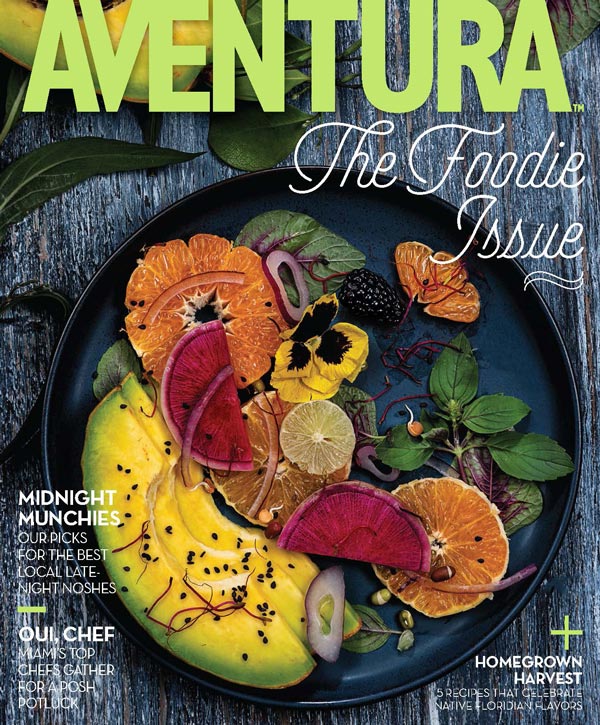
When it comes to sugar, many people feel out of control. The good news? It’s not your fault. Proven to be highly addictive, sugar floods the brain with so much dopamine (the pleasure hormone) that we can’t help ourselves but to overeat and keep coming back for more.
This addiction dates back to the beginning of mankind, when sugar was used as a means of survival. Our brain told our body to binge on the rare berry bush or beehive as a way to store fat for times when we’d need that reserve for fuel. Unfortunately, we never evolved out of this. While we no longer roam the earth hunting and gathering, we simply head to the pantry instead.

Our endocrine/hormone system acts as our internal control center and is made up of organs and glands that communicate with our brain and gut, carrying out numerous functions within the body. This system usually works in perfect harmony, but when you add sugar to the mix, an interesting phenomenon occurs. Sugar increases production of the “hunger hormone” known as ghrelin and deactivates our “satiety hormone” known as leptin, tricking our brains and bodies into thinking we are hungry.
Fast-forward to present day, when our food industry has added sugar to almost every processed food we eat. This constant exposure to sugar leads not only to overeating (especially of more sugary foods), but to obesity and diabetes. The massive increase in chronic disease, heart disease, hypertension, and especially type 2 diabetes in recent decades is no coincidence.
Kicking the addiction to sugar may seem daunting, but with a few changes, a remarkable shift can occur. Not only will your taste buds change, making foods more flavorful, but hormones may stabilize, improving mood and sleep and regulating blood sugar and blood pressure.

Sugar and Kids
If you take the grams of sugar listed on a nutritional label and divide by four, you get the number of teaspoons of refined sugar or table sugar. The USDA recommends no more than 10 teaspoons of sugar per day for adults and 6 per day for children 2 years of age and older. Infants’ taste buds are designed to crave fat and sugar in breastmilk; their rapid growth requires more calories. Unfortunately, this sweet tooth can remain until puberty, resulting in children having very limited palates. Here are some tips for limiting sugar intake during these years:
- Eliminate juice, soda, and sports drinks, which can contain up to 50 grams of sugar per drink. Stick to water instead.
- Replace desserts with fruits and fresh fruit popsicles, low-sugar yogurt, or n’ice cream (see recipe below).
- Save sweets and treats for special occasions.
- Keep fresh fruit and vegetables on hand for snacks.
- Read labels! Just because a cereal says organic and whole grain doesn’t mean it contains less sugar. Try to keep cereal sugar content to less than 6 grams per serving.
Do’s & Don’ts
Don’ts
- Processed foods including chips, crackers, pasta, and sweets
- Gluten, dairy, and all table sugar
- Artificial sweeteners such as saccharin (Sweet’n Low), aspartame (Equal), sucralose (Splenda), and sugar alcohols like xylitol, erythritol, and maltitol, which are difficult to process, causing bloating, gas, and diarrhea
- Sweeteners such as agave, cane sugar, coconut sugar, and high-fructose corn syrup, which are high on the glycemic index and act like table sugar within the body
- Sugary drinks, juices, and sodas
- High-sugar fruits such as mangoes, bananas, grapes, and pineapple
Do’s
- In place of these sweeteners and artificial sweeteners, use 1 tsp. of raw unfiltered honey, maple syrup, or pure stevia.
- Keep fruit intake to 1/2 cup of low-sugar fruits such as raspberries, blackberries, strawberries, blueberries, oranges, grapefruit, cantaloupe, and kiwi.
- Keep starchy vegetables such as potatoes and corn to a minimum (less than 1/4 of your plate).
- Include as many non-starchy vegetables as you can ( 1/2 to 3/4 of your plate). Good options are broccoli, cauliflower, brussels sprouts, asparagus, celery, cucumber, eggplant, peppers, leafy greens, tomatoes, and zucchini.
- Aim for 6 oz. of protein per meal. Best choices are lean animal meat like chicken, eggs, and omega-3-rich fish like salmon and tuna. If possible, choose organic produce, pasture-raised organic eggs and poultry, and grass-fed meat.
- • Healthy fats—such as extra-virgin olive oil, almond butter, and avocados—keep you fuller longer, staving off sugar cravings.
Vanilla N’Ice Cream with Stewed Apples Recipe
Free of gluten, dairy, and refined sugar
N’Ice Cream Ingredients
3 frozen bananas
1/2 cup soaked and drained raw cashews (either soaked overnight in enough water to cover or soaked for 1 hour in hot water)
1 tsp. vanilla extract
2 tbsp. almond or cashew milk
Combine all ingredients in a high-speed blender for 1-2 minutes, scraping down the sides as you go. Enjoy as is, or let set in the freezer for 1 hour before scooping.
 Stewed Apples Ingredients
Stewed Apples Ingredients
1 apple (I love Honeycrisp or Fuji)
1/3 cup water
1/2 tsp. ground cinnamon
Peel and core the apple and slice into wedges, about 1/4 inch thick. Place apple slices, water, and cinnamon into a saucepan or pot. Bring to a boil and then simmer for 3-4 minutes. When water is evaporated, transfer to a bowl and top with n’ice cream.
Note: Although it’s important to avoid high-sugar fruits when trying to beat the addiction to refined sugars, it’s okay to reintroduce moderate amounts once refined sugar has been eliminated. Bananas’ nutritional benefits outweigh their sugar content. They’re rich in vitamin C, potassium, and fiber, which slows the digestion of their sugars and limits the effect on blood-sugar levels and insulin production.












Facebook Comments